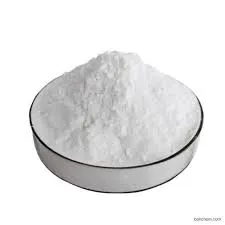- Afrikaans
- Albanian
- Amharic
- Arabic
- Armenian
- Azerbaijani
- Basque
- Belarusian
- Bengali
- Bosnian
- Bulgarian
- Catalan
- Cebuano
- Corsican
- Croatian
- Czech
- Danish
- Dutch
- English
- Esperanto
- Estonian
- Finnish
- French
- Frisian
- Galician
- Georgian
- German
- Greek
- Gujarati
- Haitian Creole
- hausa
- hawaiian
- Hebrew
- Hindi
- Miao
- Hungarian
- Icelandic
- igbo
- Indonesian
- irish
- Italian
- Japanese
- Javanese
- Kannada
- kazakh
- Khmer
- Rwandese
- Korean
- Kurdish
- Kyrgyz
- Lao
- Latin
- Latvian
- Lithuanian
- Luxembourgish
- Macedonian
- Malgashi
- Malay
- Malayalam
- Maltese
- Maori
- Marathi
- Mongolian
- Myanmar
- Nepali
- Norwegian
- Norwegian
- Occitan
- Pashto
- Persian
- Polish
- Portuguese
- Punjabi
- Romanian
- Russian
- Samoan
- Scottish Gaelic
- Serbian
- Sesotho
- Shona
- Sindhi
- Sinhala
- Slovak
- Slovenian
- Somali
- Spanish
- Sundanese
- Swahili
- Swedish
- Tagalog
- Tajik
- Tamil
- Tatar
- Telugu
- Thai
- Turkish
- Turkmen
- Ukrainian
- Urdu
- Uighur
- Uzbek
- Vietnamese
- Welsh
- Bantu
- Yiddish
- Yoruba
- Zulu
നവം . 16, 2024 08:18 Back to list
Uses of Oxytetracycline in Animal Health and Veterinary Medicine
What is Oxytetracycline Used For in Animals?
Oxytetracycline is a broad-spectrum antibiotic belonging to the tetracycline class, which is widely utilized in veterinary medicine. It is renowned for its efficacy against a variety of bacterial infections, making it an essential tool for animal healthcare. Understanding the applications and implications of oxytetracycline in animals is critical for farmers, veterinarians, and pet owners alike.
One of the primary uses of oxytetracycline in animals is to treat bacterial infections. It is effective against several pathogens, making it suitable for diverse species, including cattle, pigs, sheep, and poultry. Common conditions treated include respiratory infections, such as pneumonia, and infections of the skin and soft tissues. For instance, in livestock, oxytetracycline is often administered to manage infections caused by various strains of bacteria responsible for respiratory diseases, which can severely impact productivity and overall health.
In addition to treating existing infections, oxytetracycline is also used as a preventative measure. In swine and poultry production, it can be administered to help prevent outbreaks of diseases that can spread rapidly in crowded conditions. This prophylactic use is especially crucial in farming environments where animals are raised in close quarters, as it can mitigate the risk of disease transmission and preserve herd health.
what is oxytetracycline used for in animals

Oxytetracycline is also utilized in aquaculture. Fish farming has grown significantly, and maintaining fish health is paramount to ensure the success of aquaculture operations. The antibiotic can be used to prevent and treat bacterial infections in various fish species, helping to promote growth and improve survival rates. However, it's important to use such medications judiciously to avoid the development of antibiotic-resistant bacteria, an increasing concern within both human and veterinary medicine.
Another noteworthy aspect of oxytetracycline usage is its role in treating diseases transmitted by vectors. For instance, it has shown effectiveness against certain rickettsial infections in animals, including those vector-borne diseases that can affect both domestic and wild animal populations. Through its capability to combat a range of pathogens, oxytetracycline plays a significant role in safeguarding animal health.
Despite its benefits, the use of oxytetracycline in animals should be approached with caution. Overuse and misuse can lead to antibiotic resistance, posing a significant risk to both animal and human health. There are calls within the veterinary community to critically assess and limit the use of antibiotics in animal agriculture, which emphasizes the need for responsible medication practices and adherence to veterinary guidelines.
In conclusion, oxytetracycline is a vital antibiotic in veterinary medicine, used for treating and preventing bacterial infections in a variety of animal species. Its diverse applications, from livestock to aquaculture, highlight its importance in maintaining animal health and productivity. However, the challenges posed by antibiotic resistance call for careful management and stewardship to ensure that this valuable resource remains effective for future generations. As awareness and regulations evolve, the veterinary community must balance the benefits of oxytetracycline use against the imperative to safeguard public health.
-
Guide to Oxytetracycline Injection
NewsMar.27,2025
-
Guide to Colistin Sulphate
NewsMar.27,2025
-
Gentamicin Sulfate: Uses, Price, And Key Information
NewsMar.27,2025
-
Enrofloxacin Injection: Uses, Price, And Supplier Information
NewsMar.27,2025
-
Dexamethasone Sodium Phosphate Injection: Uses, Price, And Key Information
NewsMar.27,2025
-
Albendazole Tablet: Uses, Dosage, Cost, And Key Information
NewsMar.27,2025













